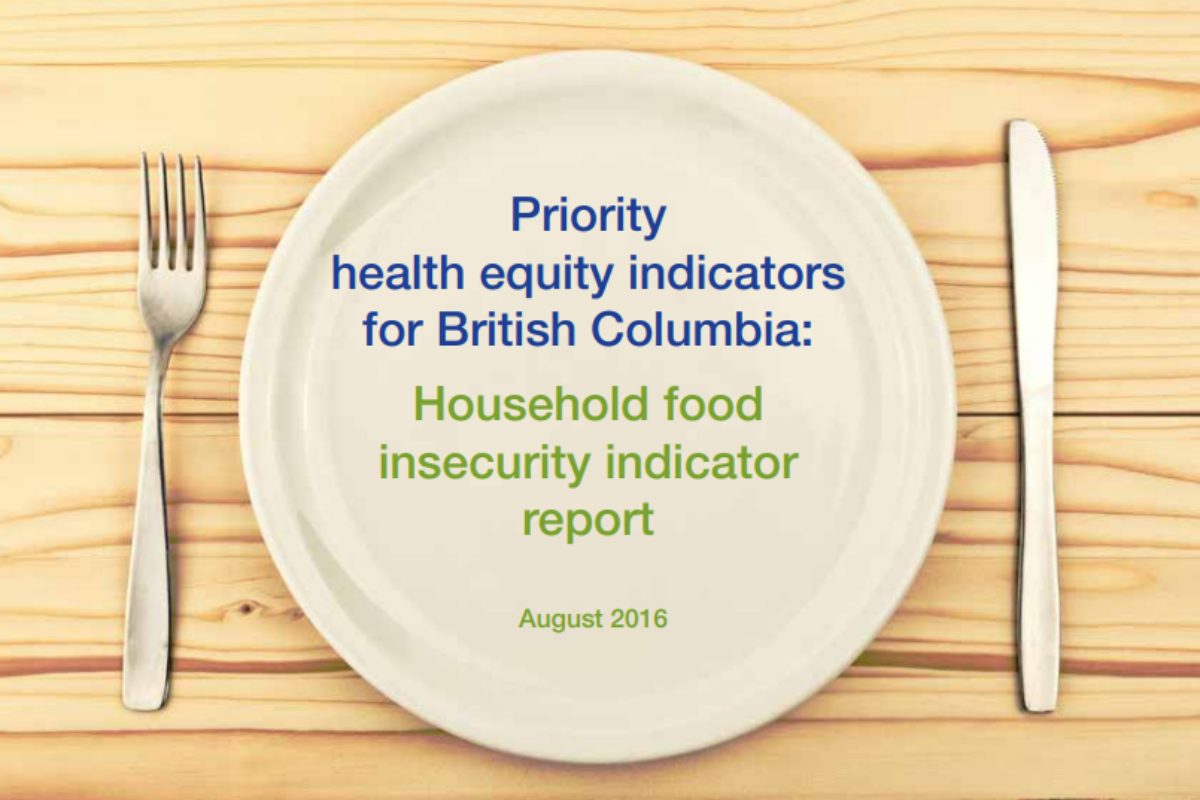Priority health equity indicators for British Columbia: Household food insecurity indicator report
August 31, 2016
How to cite: Li N, Dachner N, Tarasuk V, Zhang R, Kurrein M, Harris T, Gustin S, Rasali D (2016). Priority health equity indicators for British Columbia: Household food insecurity indicator report. Toronto: Research to identify policy options to reduce food insecurity (PROOF).Retrieved from https://proof.utoronto.ca/
Press Release:
Half a Million People Experience Food Insecurity in British Columbia, Says New Report
Northern British Columbia Especially Vulnerable
TORONTO, August 31, 2016 — Almost half a million British Columbians experienced some level of household food insecurity in 2011-2012, according to a new report from PROOF, a research group based at the University of Toronto.
Drawing on data from Statistic Canada’s Canadian Community Health Survey, the report finds over one in ten B.C. households struggling to put food on the table in 2011-12. Families with children under the age of 18 were at an even greater risk of food insecurity, with one in six B.C. children living in a food insecure household.
At its mildest level, food insecurity means worrying about feeding yourself and your family before your next pay cheque. As the problem gets worse, people can’t afford to have balanced meals. Then they begin to skip meals, cut portion sizes and eventually go days without eating, all because they can’t afford the food they need. Those impacted often face physical and emotional hardships which compromise their health. British Columbians living in food insecure households reported poorer health and were more than twice as likely to experience depression and anxiety disorders, compared to those in food secure households.
Those most at risk are low-income renters. People on social assistance in B.C. are particularly vulnerable, with 76 per cent reporting food insecurity. Yet, almost two-thirds of food insecure households are in the workforce – working but just not able to make ends meet. Dr. Valerie Tarasuk, a professor in Nutritional Sciences at the University of Toronto and the lead investigator of PROOF says “these findings point to the need for provincial government actions to ensure that all British Columbians are able to afford to the food they need.” While the introduction of the Canada Child Benefit will help families, Dr. Tarasuk says BC needs to evaluate the effects of this benefit and other provincial income assistance programs on food insecurity rates to make certain no one is left behind.
One of the most striking findings in this report is the difference in food insecurity rates across the province. Worst off is northern British Columbia, where almost one in six households were food insecure in 2011-12. The situation is especially dire for families with children in this region — one in four was food insecure. Also concerning is the high prevalence of food insecurity among families with children in the Island and Interior Health Authorities. In these regions, food insecurity affected one in five families.
Brent Mansfield, Director of the B.C. Food Systems Network, described the report as “an important first step for the province because it lays bare the extent of food insecurity in B.C. and pinpoints areas of particular vulnerability. We hope the next step will be policy action to lower these numbers.”
The report examined results for B.C. from Statistic Canada’s Canadian Community Health Surveys conducted between 2005 and 2012. B.C. was one of 3 provinces that chose not to measure food insecurity on this survey in 2013 and 2014, so more recent data on food insecurity will not be available for B.C. until the 2015 results come out later this year.
PROOF is a Canadian Institutes of Health Research (CIHR) funded research program initiated to identify effective policy interventions to address household food insecurity. The full report on food insecurity in British Columbia is available to download from PROOF’s website: proof.utoronto.ca.

